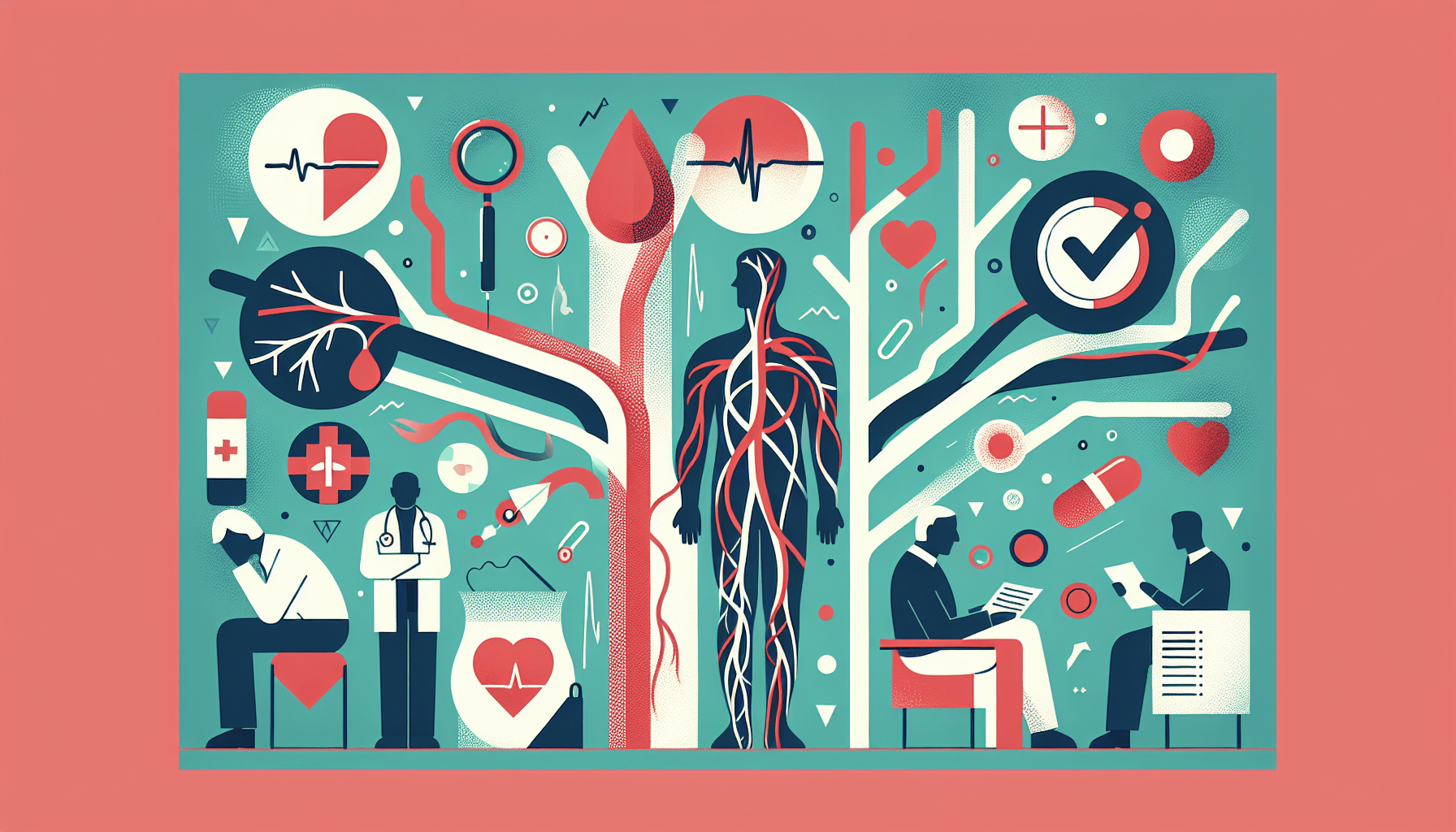Tirzepatide for Sleep Apnea - Can It Help?
Understanding Sleep Apnea and Its ChallengesSleep apnea is a common yet serious sleep disorder characterized by repeated interruptions in breathing during sleep. These pauses [...]
Read More
Medically reviewed by Abhijit Bhattacharyya | MD, PhD, MBA, Tufts University School of Medicine - Miami, Florida on March 27th, 2024.
Peripheral artery disease (PAD) is a condition in which your arteries become narrowed, reducing blood flow to your limbs. It's a form of peripheral vascular disease that can affect your arms, legs, head, stomach, and kidneys. If left untreated, PAD can lead to serious complications, such as heart attack, stroke, or amputation.
The most common symptom of PAD is muscle pain or cramping in your legs, particularly when walking or climbing stairs. This pain, called claudication, usually subsides with rest. Other symptoms may include:
Changes in leg color
Numbness or burning sensation in your legs or feet
Weakness or fatigue in your legs
Slow-healing sores on your toes or feet
Shiny or pale skin on your legs
Loss of hair on your legs
Erectile dysfunction (in men with diabetes)
If you experience any of these symptoms, consult your doctor for an accurate diagnosis and appropriate treatment plan.
The primary cause of PAD is atherosclerosis, a condition in which fatty deposits (plaques) build up in your arteries, reducing blood flow. Over time, these plaques harden and narrow your arteries, leading to PAD. While the exact cause of plaque buildup is unknown, several risk factors can increase your likelihood of developing PAD:
Smoking
Diabetes
High blood pressure
High cholesterol
Age (over 50)
Obesity
Lack of physical activity
Family history of PAD, heart attack, or stroke
Smoking is the single most significant controllable risk factor for PAD, increasing your risk by 400% compared to non-smokers. If you smoke, talk to your doctor about strategies to help you quit.

To diagnose PAD, your doctor will perform a physical exam and may order additional tests, such as:
Ankle-brachial index (ABI) to compare blood pressure in your legs and arms
Ultrasound to assess blood flow and identify blocked arteries
Angiogram to visualize blocked arteries using X-ray and contrast dye
Blood tests to check for risk factors like diabetes or high cholesterol
Treatment for PAD aims to manage symptoms, improve blood flow, and prevent complications. Your doctor may recommend lifestyle changes, medications, or surgical procedures, depending on the severity of your condition.
Quit smoking
Exercise regularly
Eat a healthy diet
Manage stress
Control blood sugar, blood pressure, and cholesterol levels
Cilostazol or pentoxifylline to improve blood flow
Aspirin or other anti-clotting drugs to prevent blood clots
Cholesterol-lowering medications (statins)
Blood pressure medications
Diabetes medications
Angioplasty and stenting to widen narrowed arteries
Bypass surgery to redirect blood flow around blocked arteries
Adopting a healthy lifestyle is the best way to prevent PAD. This includes regular exercise, a balanced diet, stress management, and controlling conditions like high blood pressure, diabetes, and high cholesterol. If you smoke, quitting is the most significant step you can take to reduce your risk of developing PAD.
Regular checkups with your doctor can help detect PAD early, allowing for prompt treatment and prevention of complications. If you have concerns about your risk factors or experience symptoms of PAD, don't hesitate to consult your healthcare provider.
For more information on peripheral artery disease, visit:
Understanding Sleep Apnea and Its ChallengesSleep apnea is a common yet serious sleep disorder characterized by repeated interruptions in breathing during sleep. These pauses [...]
Read MoreHeart attacks are often perceived as a predominantly male health issue, but the reality is that heart disease is the leading cause of death for women worldwide. Recognizing [...]
Read MoreTelehealth has transformed the way patients access healthcare, offering convenience, speed, and accessibility that traditional in-person visits often cannot match. With the [...]
Read More